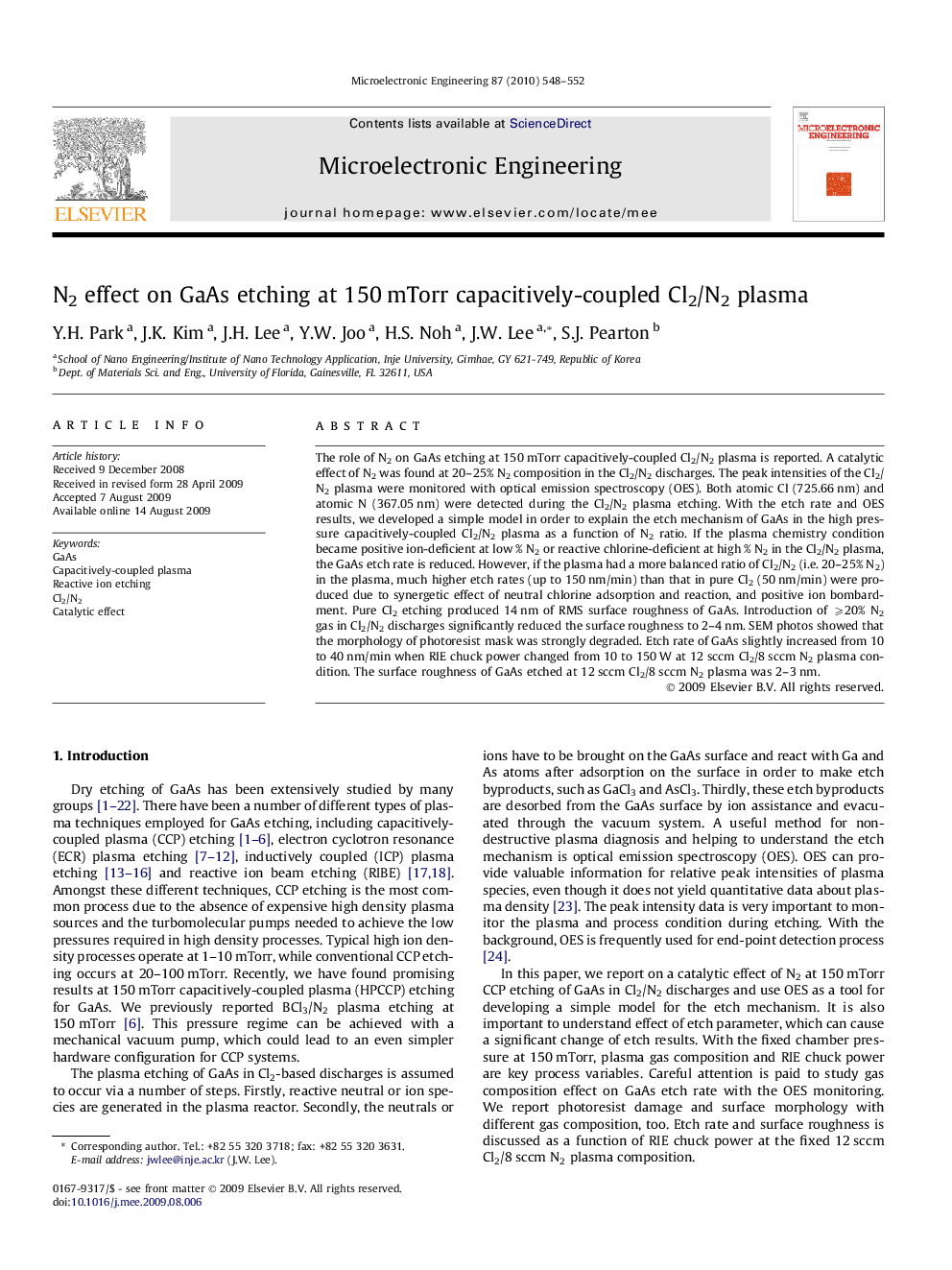| Article ID | Journal | Published Year | Pages | File Type |
|---|---|---|---|---|
| 544831 | Microelectronic Engineering | 2010 | 5 Pages |
The role of N2 on GaAs etching at 150 mTorr capacitively-coupled Cl2/N2 plasma is reported. A catalytic effect of N2 was found at 20–25% N2 composition in the Cl2/N2 discharges. The peak intensities of the Cl2/N2 plasma were monitored with optical emission spectroscopy (OES). Both atomic Cl (725.66 nm) and atomic N (367.05 nm) were detected during the Cl2/N2 plasma etching. With the etch rate and OES results, we developed a simple model in order to explain the etch mechanism of GaAs in the high pressure capacitively-coupled Cl2/N2 plasma as a function of N2 ratio. If the plasma chemistry condition became positive ion-deficient at low % N2 or reactive chlorine-deficient at high % N2 in the Cl2/N2 plasma, the GaAs etch rate is reduced. However, if the plasma had a more balanced ratio of Cl2/N2 (i.e. 20–25% N2) in the plasma, much higher etch rates (up to 150 nm/min) than that in pure Cl2 (50 nm/min) were produced due to synergetic effect of neutral chlorine adsorption and reaction, and positive ion bombardment. Pure Cl2 etching produced 14 nm of RMS surface roughness of GaAs. Introduction of ⩾20% N2 gas in Cl2/N2 discharges significantly reduced the surface roughness to 2–4 nm. SEM photos showed that the morphology of photoresist mask was strongly degraded. Etch rate of GaAs slightly increased from 10 to 40 nm/min when RIE chuck power changed from 10 to 150 W at 12 sccm Cl2/8 sccm N2 plasma condition. The surface roughness of GaAs etched at 12 sccm Cl2/8 sccm N2 plasma was 2–3 nm.
